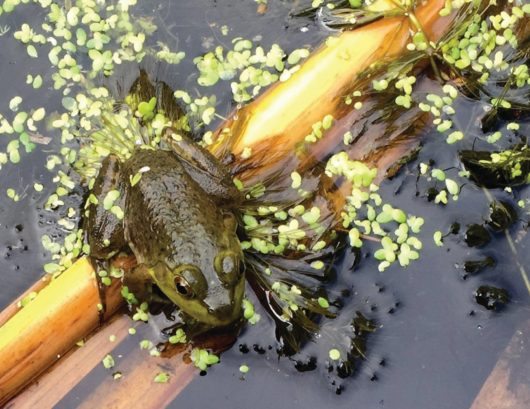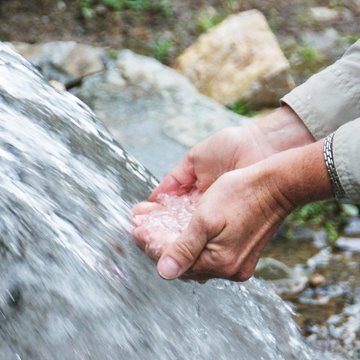In This Issue
-
Mary A O'Brien ● Why Science?
-
Stefani Allegretti ● Nature Body Connect
-
Wendy Brawer ● Green Map System
-
Lorna Stevens and Joanne Easton ● Common Dilemmas
-
Josefa Vaughan ● ArtSeed
-
Erica Cirino ● How Collage Made My Life Whole
-
Susan Leibovitz Steinman ● Artists At Work
-
Betsy Damon ● What Can We Do Now?
-
Susan Leibovitz Steinman ● BRAVO! Member News
-
Amy Lipton ● JACKIE BROOKER: Why Matter Matters?
What Can We Do Now?
Editor’s note: At my urging, Betsy Damon kindly sent us a quick but urgent “stream of thought” essay on where we are now, and where might we go. Here’s her opinion.
WE LIVE IN CHALLENGING TIMES. Overwhelmed by political and ecological crises, it’s difficult to know what to do first, or even, what’s possible. More than human survival is at risk.
Diminishing food and water sources have lead to tensions, wars, homelessness and refugees. Greedy corporations are grabbing global resources– gas, oil, water, and forests –-to control the very roots of global sustainability.
Rainforest destruction is impacting trees worldwide. Forests are being destroyed along with their essential trans-evaporation processes that cycle earth’s waters. Trees contain medicinal and functions we are only beginning to understand. Trees live tribally–inter-connected they assist each other to thrive and to help the younger ones to grow.
Waters have been dammed, disconnected, and watersheds destroyed. Water is the connective tissue that collaborates to restore life. Our water systems must be rapidly reconnected to increase carrying capacities, flexibility and cooperation.
Our one commonality is that we share this earth. We humans must function like the forests and rivers.
Cease thinking we can stand alone on one issue and have the answers for all. Everyone potentially can participate in grander larger solutions. (Standing rock is the closest-best demonstration of working together, standing together solidly for a future.)
While helpful, every micro backyard solution cannot contradict larger events. Once having done them, do not stop–move to a larger scale project, working with others.
What’s possible? Gather a group to create a vision and empower everyone to execute that vision (not the vision of one person).
One critically needed action is to plant trees–plant, plant, and plant like never before. Protect and enlarge existing forests that have been ravaged for oil and gas supplies –keep them intact. These forests exist in both northern and southern hemispheres, covering much of Canada and Russia. The people who live among these trees face corporate takeover of their homes and animals’ habitats.
We need to hold water in mountains for forests to survive. It’s not enough for vegetation to move up mountain, we need to catch and store water up mountain.
We need vast worldwide projects that address extreme conditions. We’ve been taught to make things simple, doable, so small that they do not challenge the perceived forces. I constantly examine my own thoughts, to see if I’ve accepted limits or self-blame for corporate or governmental wrongdoings. We must restore complexity, cooperation and collaboration in our lives – and know that we don’t lose by becoming part of a vast collaborative effort.
As an artist working in China I learned the value of cooperation. The Chinese are highly challenged with 1 billion 500 million people. When there I use less; produced less garbage. I can tell that, with humor, lightness and seriousness, I’m part of their larger project to save rivers and forests. Right now as I’m writing this, the Chinese government has funded a major project to plant millions of trees and clean water systems. Will it succeed, I don’t know, but at least the vision is there.
In the US, large populations that live on the Atlantic coast shores (Manhattan island, Miami) are all in danger as seas rise. Yet little has been done; large high rises are built on the waters edge. It’s it is frightening.
In the west, California seems too big, rich and beautiful to fail but it might. Its waterways should be characterized as pipe sheds not watersheds. Combine that inflexible, unsustainable infrastructure with the changes in precipitation from the rain forest and global warming impacts and the state is very challenged. Good news is that parts of the state are finding ways to recharge and store water.
Some artists have already helped us to “see larger pictures.” Their projects collaborate with communities to capture water and plant trees. They help free rivers from concrete aqueducts to natural systems that nourish and clean habitats. Part of a growing movement to conserve water the Los Angeles government began replacing concrete hardscapes that exacerbate climate change with permeable natural materials. Slowly eco consciousness and real actions are beginning to make a huge difference. .
Artist Sandra Postel is in the process of a unique model where she has asked all on the southern CA. Colorado River watershed to share the waters. Remarkably enough, many have agreed to share their water rights helping life to returning to the river and adjacent land.
The time has come to boldly invite everyone into this collaboration – which we cannot hold back, feel shy or inadequate. What we risk in not doing this is enormous.
As I write this I am stuck indoors with a broken bone wondering what action makes sense and how, where and with whom.
I just read that a Carmel River dam has been removed. I see hope. We need to look for and create hope everywhere.
Editor’s footnote: Here is a very short inadequate list of artists working on large projects with water or trees. Research; there are myriad more.
Betty Beaumont “Ocean Landmark”
Liza Behrendt “The Beauty of Water”
Jackie Brookner “The Gift of Water”
Mel Chin “CURRENT: LA WATER—Ties that Bind; Mirror of the Future”
Helen and Newton Harrison, “How Big is Here”
Basia Irland “A Gathering of Waters”
Andy Lipkis “The Tree People” nonprofit
Kathryn Miller “Area 52 Water Clean Up”


